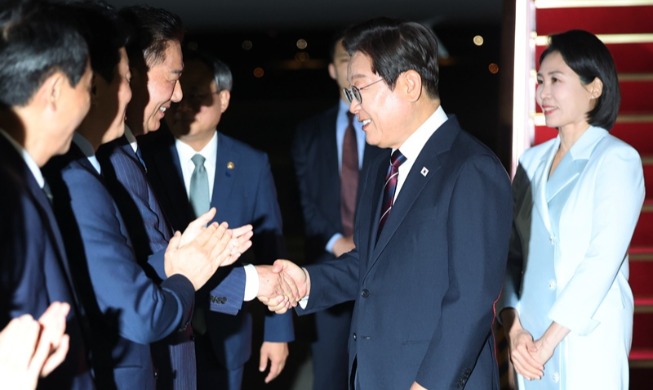Namyeung Nylon, which later became today’s Namyeung Vivien Corporation, was already well-known among female consumers for producing Korea’s first band-type stocking, its Rose of Sharon stockings, in 1958. The company naturally broadened its product line to include female lingerie. As more women grew to enjoy wearing Western clothes, Nam believed that they also needed Western style underwear to better suit their outer garments. He thought that the role of underwear was to make people look better in their outfit by showing off their body shape in a beautiful manner.
Nam focused on developing new designs for women’s underwear. At the time, however, people lacked the understanding of or information about Western style women’s underwear. He had to buy a lot of lingerie from overseas to sample them all in order to make new products. This even caused a misunderstanding once going through customs at the airport when he came back home. On another occasion, he was restrained by staff at an underwear shop overseas, and had to draw his own sketches for underwear designs and pass them on to his designers. Nam’s efforts paid off when Namyeung Vivien successfully produced its first brassieres in 1963. Its first bra was made from nylon, the most popular material at the time, and cotton. It was decorated with embroidery and lace with two pads attached to the lower part.
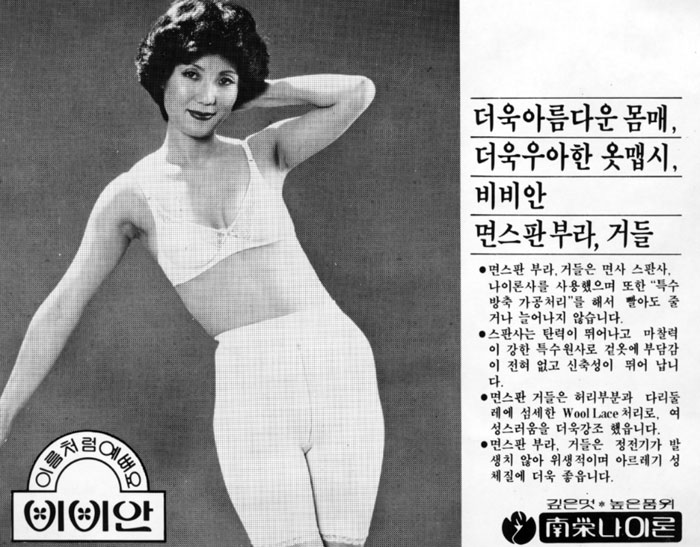
An ad for Namyeung Vivien in the 1970s.
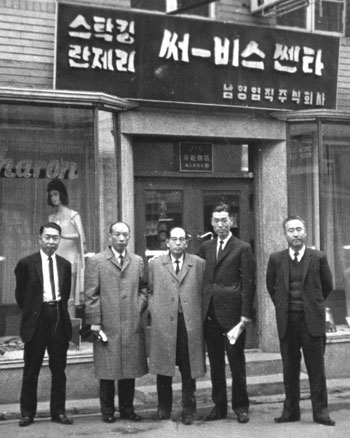
Namyeung Vivien developed the first band-type stockings in 1958 and was making bras by 1963. In the above photo, company founder Nam Sang Soo (second from right) and other executives pose for a photo in front of the first Namyeung Vivien shop in Myeong-dong, central Seoul, in the 1960s.
Since then, Namyeung Vivien has focused on R&D, backed by scientific analysis of the human body, to produce underwear with its own technology that can emphasize a woman's beauty. For example, considering the seasonal changes in the weather, the firm uses different materials for its summer and winter lines, with air-permeable or heat-retaining fabrics. By linking design and science, it has been able to categorize the size and shape of its customers' bodies in consideration of people's uniqueness and the differences found in every individual's body shape.
Some of the company’s hit items include its No-Bras (1998) and its To-See bras (2000). No-Bras are designed to be sleek and smooth so that the garment is not revealed even when worn under a tight shirt. To-See bras accessorize the shoulder straps, which used to be hidden, turning them into a new fashion item. The company also launched other brands, such as the Maternity line for pregnant women and young mothers, and Gentoff, a men’s underwear line, to broaden its customer base.
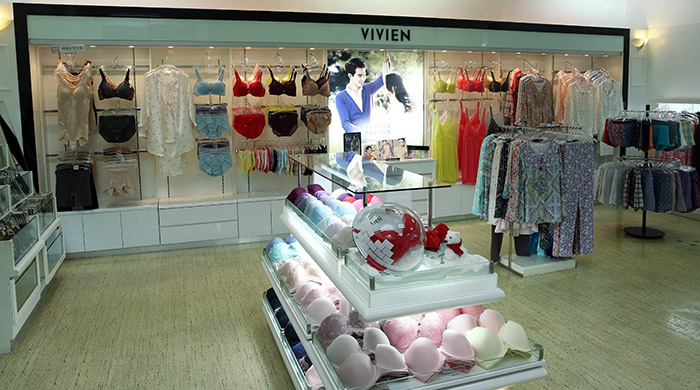
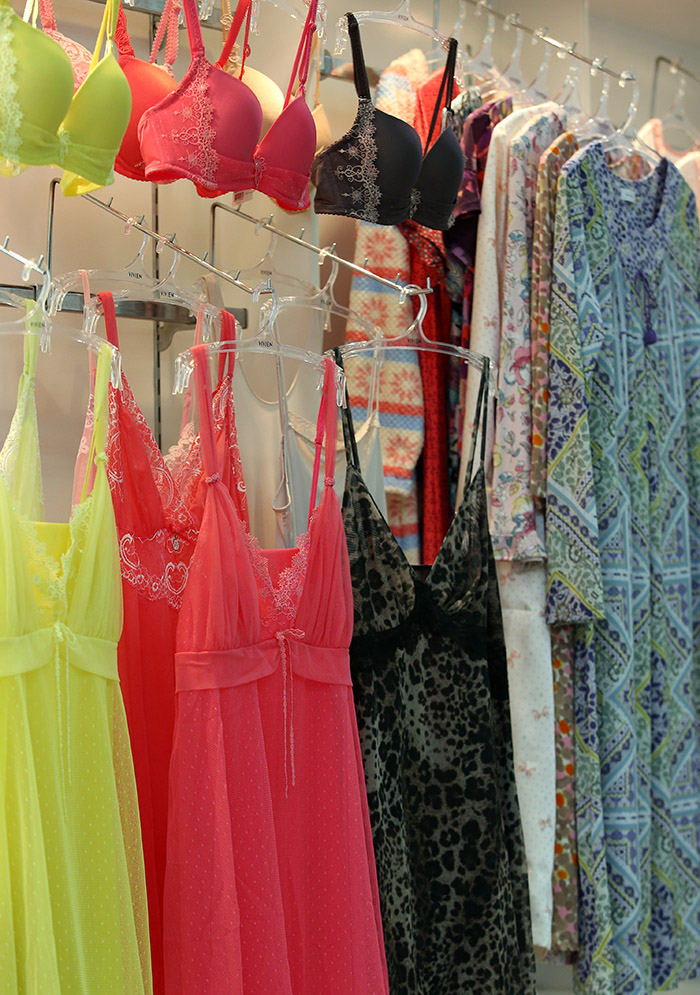

Designed in various colors and shapes, underwear for both women and men are on display at a shop at the headquarters of Namyeung Vivien in Yongsan-gu (District), Seoul.
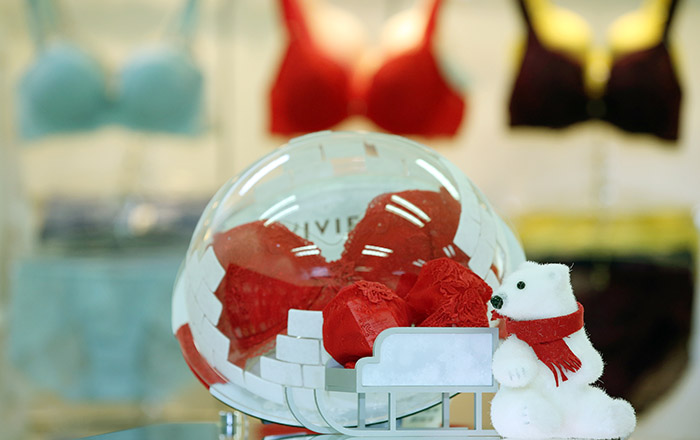
Lingerie made by Namyeung Vivien are beautifully designed and equipped with functional features, too, that boost the wearer's body image.
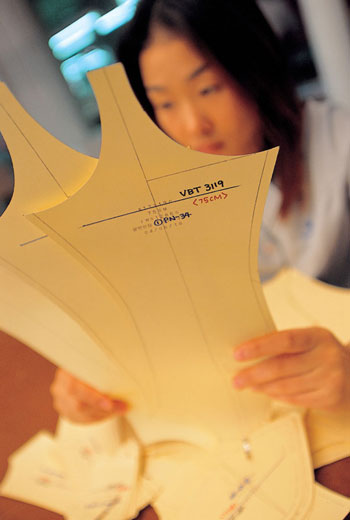
A designer at Namyeung Vivien makes a new line of underwear.
Namyeung Vivien has been known for many years as one of the leading underwear-makers in Korea. Its annual sales reached KRW 168 billion as of the third quarter of 2014. The company also actively exports its bras and underpants overseas, including to the U.S., and received the Gold Tower Order of Industrial Service Merit in 1992 from the Korean government for its contribution to exports. Currently, the firm has local subsidiaries in both China and Indonesia.
The company continues to receive favorable responses from its overseas customers. Many shoppers, including Japanese and mainland Chinese, often visit its shops in downtown areas, such as the one at Seoul Station. Many of them purchase lingerie that can amend the body shape or products in vivid colors with fancy designs. Its shop at Lotte World in Jamsil, Seoul, is especially popular among Chinese customers. In fact, showing the company's care for its customers, a special line of lingerie that reflects the preferences of the Chinese shopper can be found there.
Article by Yoon Sojung
Photos by Jeon Han, Namyeung Vivien
Korea.net Staff Writers
arete@korea.kr
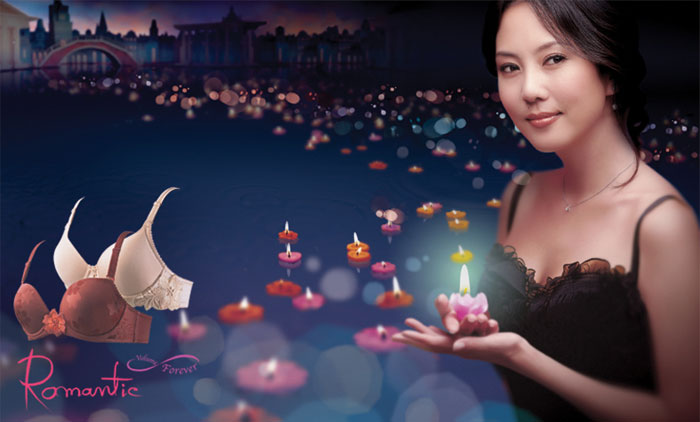
An ad for Namyeung Vivien in the 1990s features actress Kim Nam-ju.
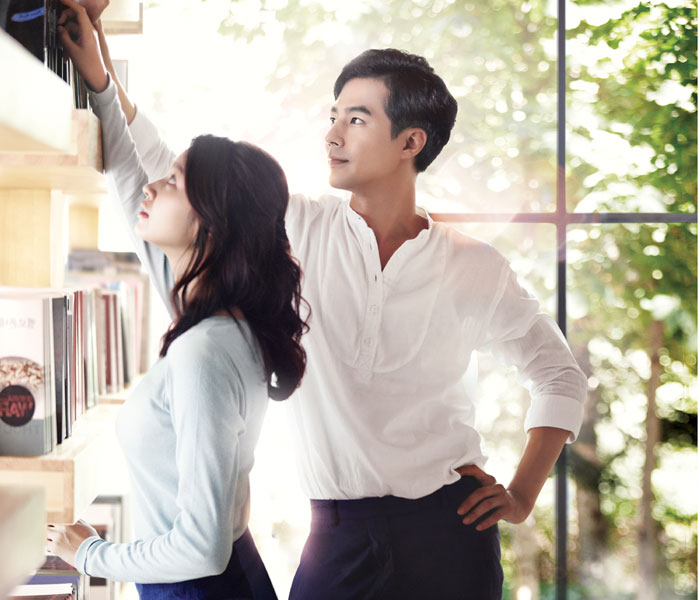
A commercial for Namyeung Vivien features actor Jo In-sung in 2014. It expresses an image of caring for and being protective of women.
Most popular
- Military discharge sets stage for reunion of all 7 BTS members
- 'We are back!' BTS Festa heralds hyped return of K-pop phenom
- Presidents Lee, Trump discuss tariff deal in first phone talks
- 'Maybe Happy Ending' wins 6 Tonys including Best Musical
- President Lee leaves for G7 Summit in Canada on first int'l trip
